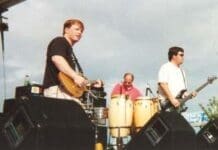 By Lisa Leath-Turpin, Health & Wellness Coach
By Lisa Leath-Turpin, Health & Wellness Coach
As we embark on another exciting year, it’s crucial to stay updated with the latest trends to make the most of our fitness journey. Survey results are in; the health and fitness industries continue to grow. So, let’s embrace the new wave of fitness. Fitness memberships, participation in personal and small group training, and older adults utilizing health clubs show that the market continues to increase. Thus, the demand for qualified exercise professionals such as credentialed personal trainers, clinical exercise physiologists, and athletic trainers is anticipated to grow 10% to 14% by 2032 according to the U.S. Bureau of Labor Statistics.
Each year the American College of Sports Medicine (ACSM) conducts a survey highlighting 45 possible trends across seven categories, polling over 2000 health and fitness professionals ages 18-72, with varying levels of experience. According to the survey, “With wearable technology (no. 1), mobile exercise apps (no. 2), and data-driven training technology (no. 7) peaking in the top 10 trends, this year’s survey results point to digital technologies making a significant impact on the fitness industry.” This list will help keep you thriving in this new year! Let’s dive into these trends and discuss practical ways to incorporate them into your routine.
Wearable Technology: Wearable technology remains the top trend, having consistently ranked in the top 10 since 2018. From smartwatches to fitness trackers, these devices provide invaluable data on your workouts, heart rate, sleep patterns and more. To incorporate it, start by investing in a reliable device that suits your needs. Use the data to set goals, monitor progress and make informed decisions about your fitness regime.
Mobile Exercise Apps: These apps are a great compliment to your in-person workouts. They help when you’re traveling or need to stay home with the kids, etc. Mobile apps offer a variety of workouts from pilates/yoga to strength training, all at your fingertips. To make the most of mobile exercise apps, dedicate a specific time each day to follow the app’s routines and stay consistent.
Fitness Programs for Older Adults: The older adult population is more active than ever! This is so encouraging and fun to work with as a personal trainer. Programs that focus on improving mobility, strength and overall health are vital to keeping us active and thriving. I encourage you to join group classes or personal training sessions designed for your age group. And additionally incorporate low-impact exercises like swimming, walking and stretching to enhance physical well-being safely.
Exercise for Weight Loss: Exercise for weight loss continues to be a significant trend. Combining cardiovascular activities with strength training is key to achieving sustainable weight loss. Variety through cross-training (doing different forms of exercise) and consistency (how often you exercise) and maintaining a healthy diet should be your formula for weight loss, with consistency being most important.
Traditional Strength Training: Traditional strength training remains THE cornerstone of fitness routines. Lifting weights helps build muscle, increase metabolism and improve bone density. Strength is so important and can only be achieved through consistent effort. If you are limited on time in your everyday life, devote what time you have to strengthening your muscles and bones.
High-Intensity Interval Training (HIIT): HIIT workouts are popular for their efficiency and effectiveness. These sessions involve short bursts of intense exercise followed by brief rest periods. HIIT can be done with minimal equipment, making it accessible for home workouts. I will expand on HIIT workouts in more detail in the following months.
Data-Driven Training Technology: Utilizing tools like performance analytics and biofeedback you can optimize your workouts. Tech can provide detailed insights into your performance, such as heart rate monitors and power meters. Data can help you adjust your training plans, set realistic goals and track improvements over time.
Exercise for Mental Health: The connection between physical activity and mental health is undeniable. Exercise can reduce stress, anxiety and depression while boosting mood and cognitive function. Incorporate activities that you enjoy and find relaxing, such as yoga, meditation or nature walks. Regular physical activity can be a powerful tool for maintaining mental well-being.
Functional Fitness Training: Functional fitness training focuses on exercises that mimic everyday movements, enhancing overall strength and flexibility. Exercises like squats, lunges and push-ups improve balance, coordination and endurance, making daily activities easier and safer.
Health/Wellness Coaching: Health and wellness coaching is gaining traction as people seek holistic approaches to fitness. Coaches provide personalized guidance on nutrition, exercise and lifestyle choices looking at the body as a whole and being proactive in catching potential issues before they begin.
Remember, the key to thriving in 2025 is staying informed and adaptable. Embrace these trends, experiment with new techniques and find what works best for you. Let’s make this year our healthiest and happiest yet! Be Active, Stay Active!!
Lisa Leath Turpin is a degreed and certified health and fitness lifestyle coach and consultant who has devoted her life to motivating and strengthening the body and mind of others. With over 20 years’ experience, Lisa has a B.S. degree in Sports & Fitness Management from the University of Alabama, developed and managed the U.S. Army Corps of Engineers’ Health & Wellness Facility and programs in Huntsville, Ala., is board certified by the National Board of Fitness Examiners and possesses certifications from AFAA, Polestar/Balanced Body, Reebok U, SCW Fitness and American Heart Association. She is currently a group exercise leader at Destin Health & Fitness and an independent personal trainer in the Destin area, diversely and extensively trained in classical and modern Pilates, lifestyle management, personal training, group exercise and post-rehabilitation.





























































